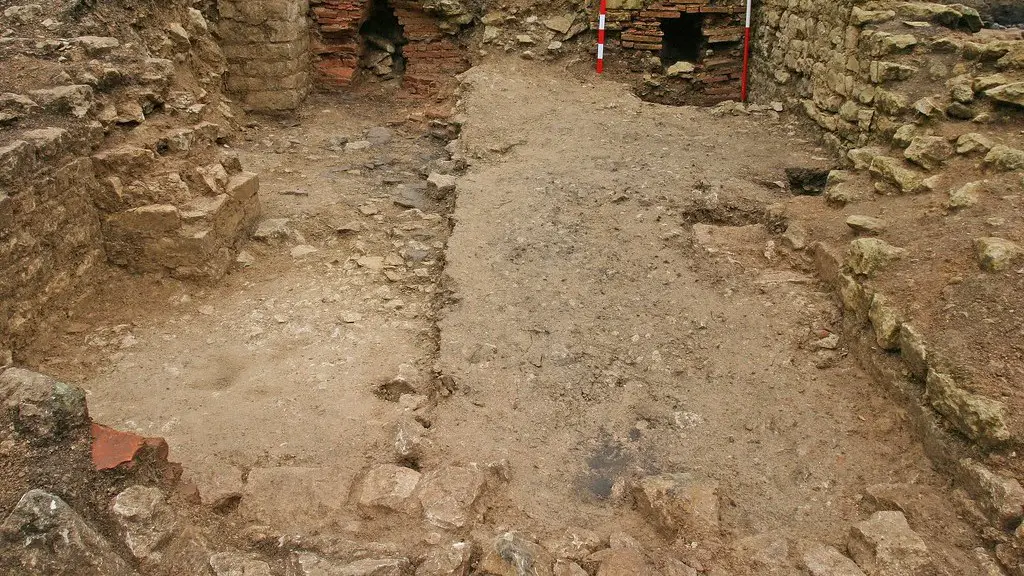Background Information
The phenomenon of slavery has a long history and is believed to have existed since the dawn of humankind. During the ancient Roman era, it was commonplace to have slaves perform everyday tasks like cooking, cleaning, and manual labor. But what was the living situation of slaves in ancient Rome?
What Living Arrangements?
Slaves in Ancient Rome lived in a variety of settings. The wealthiest citizens typically owned large villas and mansions with numerous slaves. These slaves were often provided their own sleeping quarters, separate from their owners’, within the villa or mansion. Slaves who belonged to smaller, middle-class households usually lived within the family’s living quarters.
The living quarters of slaves were often cramped, with little attention to maintenance or sanitation. Slaves were expected to maintain their own sleeping areas, making it difficult for them to achieve a well-maintained living environment.
Work Hours
Slaves in Ancient Rome worked long hours, sometimes working up to sixteen hours a day with only the weekends off. During the winter, they worked in the daylight while in the summer they worked in shifts so as not to be exposed to too much heat.
Slaves typically worked a combination of different types of tasks. Household chores included baking, gardening, washing dishes, laundry, and animal husbandry. It was not uncommon for slaves to also be employed as servants or craftsmen in larger households.
Life Expectancy
The life expectancy of slaves in Ancient Rome was much lower than that of their owners. Often, the death of a slave was seen as a minor inconvenience. Slaves were regularly sent to the gladiator games, where they were forced to fight for their lives for the entertainment of the Roman public.
In addition to violence, unpleasant working and living conditions, inadequate nourishment, and a lack of proper healthcare meant that most slaves died before reaching the age of forty. Slaves usually only lived to the age of 20-30 years old.
Treatment
Slaves in Ancient Rome were often treated harshly by their owners. Some mistreated their slaves to the point of torture, while others offered varying degrees of kindness. It all depended on the wishes of the owner, although some strict laws attempted to limit the mistreatment of slaves.
There was no legal standard of care and punishment for slaves in Ancient Rome. Major punishments typically included beating and torture and in extreme cases, execution. Male slaves were sent to the mines, while female slaves were often sent to work as prostitutes. Slaves who caused serious offenses or attempted simple escape faced the threat of death.
Bonuses and Benefits
Despite the harsh treatment, some owners did offer slaves bonuses and benefits. For example, some were offered certain types of foods, paid for special events, and even allowed to attend theatrical performances.
Ownership
Slaves in Ancient Rome were owned by a variety of different people, ranging from wealthy citizens to families of modest means. The majority of slaves were owned by the wealthy upper class, with the average household having between two to three slaves.
Ownership of slaves in Ancient Rome was usually done through an intricate network of slave traders. The process usually began with an owner purchasing a slave from the slave trader, who arranged for the slave to be transported to the new owner’s residence.
Conclusion of Laws
Slaves in Ancient Rome were subject to strict laws. Most breaking of the laws could be punished by death. Owners were responsible for the welfare of their slaves and had the right to punish or even execute them.
The protection of slaves was minimal and was limited to some limits of severity in the punishment and a few bonuses. Nonetheless, slavery in Ancient Rome was commonplace and accepted as part of the culture and society.
Freed Slaves
There were no laws in Ancient Rome that made it illegal to own slaves, and so slaves were an important part of the economy. However, there were ways for a slave to gain his or her freedom. For example, some slaves were freed after providing a certain number of years of service, or after their master died. Some slaves also managed to purchase their freedom through hard work and saving.
For those who weren’t able to gain their freedom, they often integrated themselves into their owner’s family and had access to many of the same resources, including education and leisure activities. This was uncommon, however, and many slaves retained very limited aspects of their lives in the form of independence, personal wealth, and freedom.
Legacy of Slavery
Despite the fact that slavery has been illegal for centuries, the legacy of Ancient Rome’s slaves live on today. Having worked in a variety of settings and for different types of owners, slaves in Ancient Rome provided an invaluable service. While their living and working conditions were often harsh, slaves formed an integral part of Rome’s economy and helped to shape the world we live in today.
In Depth Analysis
During the ancient Roman era, slavery was a common practice and a large part of their culture and economy. Slaves had a variety of living arrangements in Ancient Rome, ranging from the basic shared sleeping quarters within the family’s quarters to a more elaborate setting with separate sleeping quarters within the villa or mansion of their owners.
Not only did they have to endure long working hours, often up to sixteen hours a day, but also, a much lower life expectancy than their owners, often being sent to the gladiator games or working in the mines depending on their gender and offence. The treatment of slaves depended on their master, who was responsible for the welfare of their slaves, however, punishments were usually violent and often, in extreme cases, execution.
Though most slaves did not gain their freedom, some managed to purchase it. Freed slaves were still connected to their former masters, often receiving benefits like special foods and attending shows. Despite slavery being now illegal, the legacy of slaves in Ancient Rome can still be felt today as they provided an invaluable service.
Impact on Society Today
Slavery and its various forms, from traditional to modern-day slavery, still haunt societies around the world today. The legacy of the slaves of Ancient Rome can still be felt throughout society, with the lessons learned from their struggles and experiences still relevant.
Modern-day slavery is still very much present in many cultures and societies around the world and is an increasing concern that needs to be addressed. The knowledge and understanding of the slavery in Ancient Rome provide insight into the impact of this injustice on our present societies and a valuable reminder of the damage it can cause.
Connections to Other Societies
As one of the most powerful empires of the ancient world, Ancient Rome had an extensive influence on the world, including the various practices of slavery. Ancient Rome was not the only society to practice slavery, with countless other societies from the ancient, to the medieval and even present day having their own slave systems.
One can draw many comparisons between slavery of Ancient Rome and other societies, from the systems of owners and slaves, to punishments and living arrangements. Studying slavery in Ancient Rome provides useful information and insight into how it was practiced in other cultures, societies and time periods.
Symbolic Meaning of Slavery
The practice of slavery had a symbolic and political meaning within Ancient Rome, with some seeing it as a way of maintaining social and ethnic divisions and a way to demonstrate power. Slavery was seen as a way to control those of lower social classes and demonstrate the dominance of the wealthy upper classes.
The practice of slavery in Ancient Rome further reinforced these divisions and created a distinct hierarchy among its citizens. Slavery had a powerful and meaningful symbolic message in Ancient Rome and understanding these implications is essential in recognizing the practice in its entirety.


